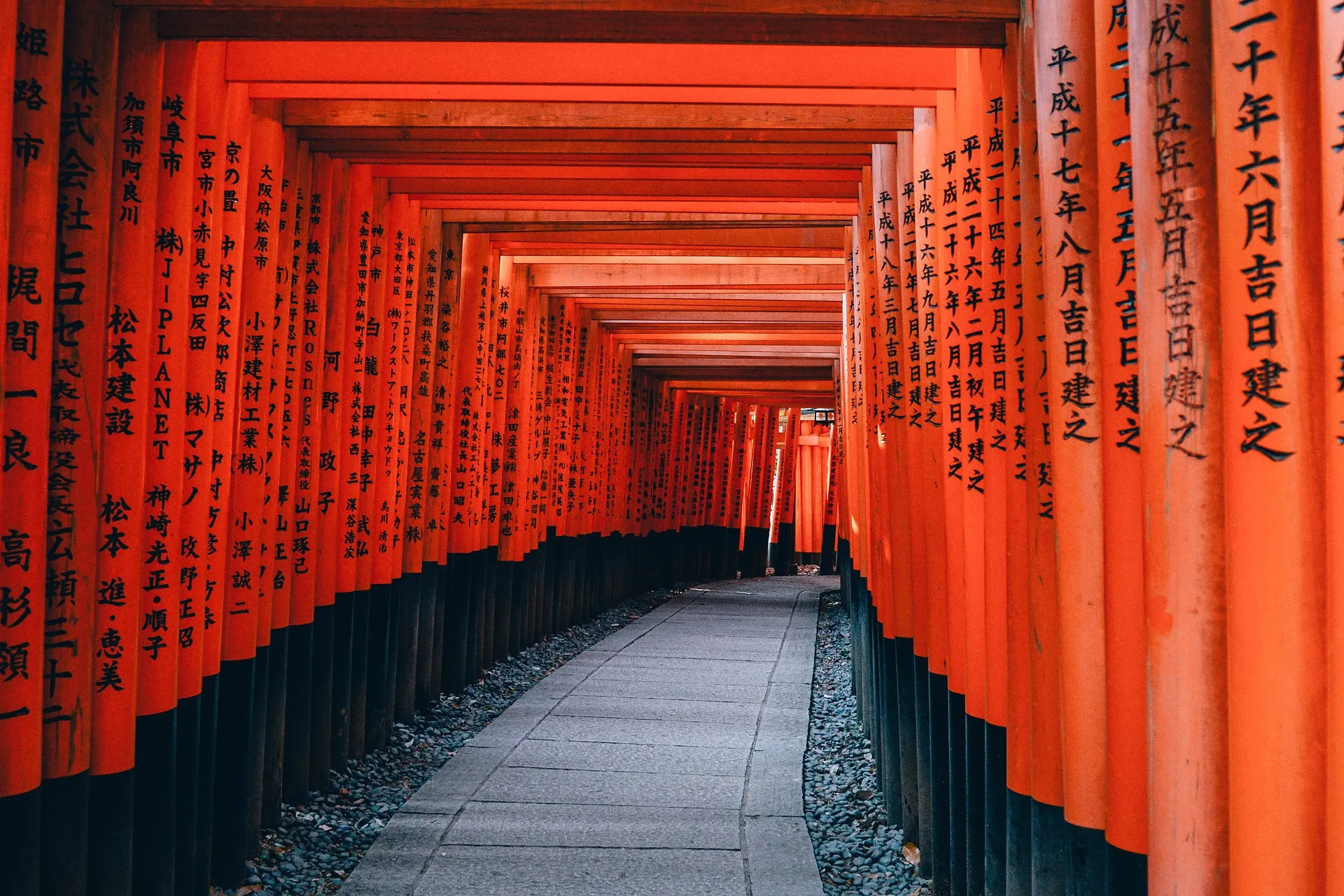Zen Gardens & Temples in Kyoto
Kyoto's Zen gardens and temples provide a sanctuary for those seeking tranquility and reflection. These sacred spaces, with their minimalist designs and meticulous arrangements, embody the essence of Zen philosophy.
🪨 Ryōan-ji (龍安寺)
- Why go: World-famous karesansui (dry rock garden) with 15 stones and raked gravel.
- Time needed: 45–60 min.
- Best time: Morning for quiet; winter light is great for texture.
- Hours/price: Daytime; paid entry (garden/grounds).
- Access: Keifuku (Randen) Kitano Line → Ryōan-ji stop; buses from Kyoto Station.
- Tips: Sit and take time—shifting viewpoints reveal different stone groupings.
- Nearby: Kinkaku-ji, Ninna-ji.
✨ Kinkaku-ji (金閣寺, Golden Pavilion)
- Why go: Iconic gold-leaf pavilion reflecting in a mirror pond; landscaped strolling garden.
- Time needed: 40–60 min (one-way loop).
- Best time: Clear mornings or fresh snow days.
- Hours/price: Daytime; paid entry.
- Access: City buses to Kinkaku-ji-michi.
- Tips: It’s busy—arrive at opening; photos are best from the first two viewpoints.
- Nearby: Ryōan-ji, Daitoku-ji.
🌿 Ginkaku-ji (銀閣寺, Silver Pavilion)
- Why go: Moss gardens, raked sand cone (Kogetsudai), hillside path over temple roofs..
- Time needed: 45–60 min.
- Best time: Late spring greens or autumn colors.
- Hours/price: Daytime; paid entry.
- Access: End of the Philosopher’s Path; buses to Ginkaku-ji-michi.
- Tips: Do the upper loop for views over Higashiyama.
- Nearby: Philosopher’s Path, Nanzen-ji, Eikan-dō.
🍁 Tōfuku-ji (東福寺)
- Why go: Dramatic valley of maples around Tsūten-kyō bridge; classic Zen gardens at the Hōjō.
- Time needed: 60–90 min.
- Best time: Mid–late Nov for peak foliage.
- Hours/price: Daytime; paid (separate tickets for valley/Hōjō).
- Access: JR Nara Line or Keihan to Tōfuku-ji.
- Tips: In foliage season, go at opening and expect crowd control.
- Nearby: Fushimi Inari Taisha (1 stop).
🎋 Tenryū-ji (天龍寺, Arashiyama)
- Why go: UNESCO Zen temple with Sōgenchi pond garden and borrowed scenery of Arashiyama.
- Time needed: 45–75 min (longer if combining bamboo grove).
- Best time: Morning before tour groups; great in autumn.
- Hours/price: Daytime; paid (garden; buildings extra).
- Access: Arashiyama area (JR Saga-Arashiyama / Hankyu / Randen).
- Tips: Exit toward the bamboo grove from inside the grounds to beat the crowds.
- Nearby: Bamboo Grove, Ōkōchi Sansō, Togetsukyō Bridge.
🏯 Nanzen-ji (南禅寺) & subtemples (e.g., Tenjuan)
- Why go: Grand temple precincts with aqueduct, multiple rock and pond gardens in subtemples.
- Time needed: 60–120 min (less if only main grounds).
- Best time: Late afternoon light; autumn at Tenjuan is superb.
- Hours/price: Main grounds free; paid for Sanmon, subtemples, gardens.
- Access: Subway Tozai Line → Keage.
- Tips: Don’t miss a quiet subtemple—Tenjuan or Konchi-in—for intimate gardens.
- Nearby: Eikan-dō, Philosopher’s Path, Heian Shrine.
🌀 Kennin-ji (建仁寺, Gion)
- Why go: Oldest Zen temple in Kyoto (Rinzai); twin dragon ceiling, multiple dry gardens.
- Time needed: 45–60 min.
- Best time: Weekday mornings; pair with Gion walk.
- Hours/price: Daytime; paid entry.
- Access: Short walk from Gion-Shijō / Kawaramachi.
- Tips: The ○△□ (circle-triangle-square) motif appears throughout—spot the Zen symbolism.
- Nearby: Yasaka Shrine, Hanamikoji.
🧘 Daitoku-ji (大徳寺) temple complex
- Why go: Quiet walled Zen compound with rotating subtemples (e.g., Ryōgen-in, Zuihō-in) and exquisite small gardens.
- Time needed: 60–120 min depending on open subtemples.
- Best time: Mornings; fewer tour groups than central sights.
- Hours/price: Grounds free; subtemples paid (vary by season).
- Access: Buses to Daitoku-ji-mae.
- Tips: Check which subtemples are open that day; they rotate.
- Nearby: Imamiya Shrine, Kamo River (Kitaoji area).
🧡 Kodai-ji (高台寺) (bonus, near Gion)
- Why go: Elegant hillside stroll garden, seasonal night illuminations.
- Time needed: 40–60 min.
- Best time: Spring/Fall night lights.
- Hours/price: Daytime; paid (separate fee for illumination).
- Access: Walk from Gion / Kiyomizu-michi.
- Tips: Time your visit to sunset → illumination for both moods.
- Nearby: Yasaka Pagoda, Kiyomizu-dera.


.avif)

.avif)
.avif)
.avif)






